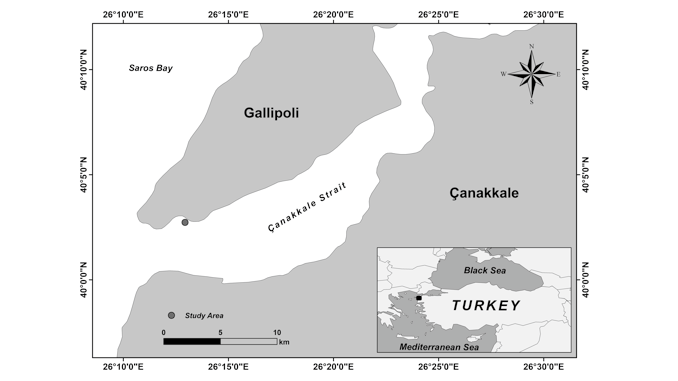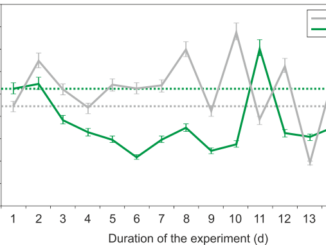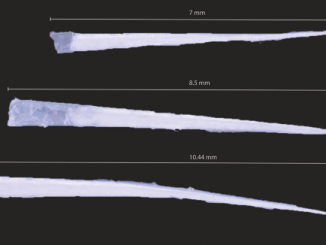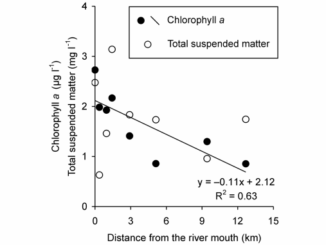
Paper category: Original research paper
Corresponding author: Sefa Acarli (sefaacarli@comu.edu.tr)
DOI: 10.2478/oandhs-2021-0002
Received: 21/06/2021
Accepted: 01/09/2020
Full text: here
Citation (APA style): Kizilkaya, B., Acarli, S., Ertuğrul, P., Berber, S. & Çelik, P. (2021). Variation in radical antioxidant capacity and the total amount of carotenoids in razor clams, Ensis marginatus (Pennant, 1777), from the Çanakkale Strait (Abidealtı), Turkey. Oceanological and Hydrobiological Studies, 50(1), 16-23. https://doi.org/10.2478/oandhs-2021-0002
Abstract
Metabolic activities such as breathing and digestion, resulting from natural functions of the body through oxidation, lead to the formation of free radicals that cause cancer, premature cardiac aging and some chronic diseases. Antioxidants are substances that remove free radicals and prevent cell damage. Seafood significantly contributes to the elimination of free radicals, especially owing to its high quality nutrient content. In this context, the objective of the study was to determine the radical antioxidant capacity and the total amount of carotenes in razor clams. The IC50 (mg g−1) value of the DPPH radical sweeping effect varied over the months (p < 0.05), showing the highest value in June, gradually decreasing from September and reaching the lowest level in February. The total amount of carotenoids also varied, with the highest value in September (p < 0.05). The total amount of chlorophyll ranged from 6.15 µg g−1 in August to 66.71 µg g−1 in December.
Acknowledgements
This work was supported by the Scientific Research Projects Coordination Unit of Çanakkale 18 Mart University (Project No. FHD-2018-1442, Project Leader: Sefa Acarlı).
References
Abdel-Satter, E., Ahmed, A.A., Hegazy, M.E.F., Farag, M.A. & Al-Yahya, M.A.A. (2007). Acylated pregnane glycoside from Caralluma russeliana. Phytochemistry 68(10): 1459–1463. DOI: 10.1016/j.phytochem.2007.03.009.
Acarli, S., Yıldız, H., Ayaz, A., Acarli, A., Küçükdermenci, A. (2014). Çanakkale Gelibolu bölgesinde Sülüneslerin, Ensis marginatus (Pennant, 1777), üreme döngüsü ve biyokimyasal kompozisyonun belirlenmesi. Proje No:2011/066, p.47.
Acarli, S., Lök, A., Acarli, D. & Kücükdermenci, A. (2018a). Gamogenetic cycle, condition index and meat yield of the Noah’s Ark shell (Arca noae Linnaeus, 1758) from Gerence Bay, Aegean Sea Turkey. Ege Journal of Fisheries and Aquatic Sciences 35(2): 141–149.
Acarli, S., Lök, A., Acarli, D. & Kirtik, A. (2018b). Reproductive cycle and biochemical composition in the adductor muscle of the endangered species fan mussel Pinna nobilis, Linnaeus 1758 from the Aegean Sea, Turkey. Fresenius Environmental Bulletin 27: 6506–6518.
Berthon, J.Y., Nachat-Kappes, R., Bey, M., Cadoret, J.P., Renimel, I. et al. (2017). Marine algae as attractive source to skin care. Free Radical Research 51(6): 555–567. DOI: 10.1080/10715762.2017.1355550.
Biehler, E., Mayer, F., Hoffmann, L., Krause, E. & Bohn, T. (2010). Comparison of 3 spectrophotometric methods for carotenoid determination in frequently consumed fruits and vegetables. Journal of Food Science 75(1): 55–61. DOI: 10.1111/j.1750-3841.2009.01417.x.
Borodina, A.V. & Soldatov, A.A. (2016). The qualitative composition of carotenoids and their seasonal dynamics in tissues of the Bivalve Anadara kagoshimensis (Tokunaga, 1906). Russian Journal of Marine Biology 42(2): 166–177. DOI: 10.1134/S1063074016020024.
Borodina, A.V. (2016). Effect of food deprivation on transformation of carotenoids in the bivalve mollusc Anadara kagoshimensis (Tokunaga, 1906). Journal of Evolutionary Biochemistry and Physiology 52(4): 282–291. DOI: 10.1134/S0022093016040025.
Borquaye, L.S., Darko, G., Ocansey, E. & Ankomah, E. (2015). Antimicrobial and antioxidant properties of the crude peptide extracts of Galatea paradoxa and Patella rustica. SpringerPlus 4(1): 1–6. DOI 10.1186/s40064-015-1266-2.
Brand-Williams, W., Cuvelier, M.E. & Berset, C. (1995). Use of a free radical method to evaluate antioxidant activity. LWT - Food Science and Technology 28(1): 25–30.
Correia, A.D., Costa, M.H., Luis, O.J. & Livingstone, D.R. (2003). Age-related changes in antioxidant enzyme activities, fatty acid composition and lipid peroxidation in whole body Gammarus locusta (Crustacea: Amphipoda). Journal of Experimental Marine Biology and Ecology 289(1): 83–101. DOI: 10.1016/S0022-0981(03)00040-6.
Czeczuga, B. (1980). Carotenoid contents in Diodora graeca (Gastropoda:Fissurellidae) from the Mediterranean (Monaco). Comparative Biochemistry and Physiology 65(2): 439–441. DOI: 10.1016/0305-0491(80)90045-0.
Diaz, A.G., Seijo, C.S., Gaspar, B.M. & Gonzalez, F.C. (2011). Razor Clams: Biology, Aquaculture and Fisheries. Conselleia do Mar, Xunto de Galicia. 428p.
Dridi, S., Romdhane, S.M. & Elcafsi, M. (2007). Seasonal variation in weight and biochemical composition of the Pacific oyster, Crassostrea gigas in relation to the gametogenic cycle and environmental conditions of the Bizert lagoon, Tunisia. Aquaculture 263 (1–4): 238–248. DOI: 10.1016/j.aquaculture.2006.10.028.
Escarria, S., Reyes, C. & Rohan, D. (1989). Estudio bioquímico de la escalopa Argopecten circularis. Ciencta Marina 15(1): 63–72.
FAO (2020). FISHSTAT J. United Nations, Rome. Retrieved from http://www.fao.org/fishery/statistics/software/fishstatj/en
Dominiques, R.B. & Barbosa Galvao, H.A. (2005). Nutrients, light and phytoplankton succession in a temperate estuary (the Guadiana, south-western Iberia). Estuarine Coastal and Shelf Science 64: 249-260.
García-Chavarría, M. & Lara-Flores, M. (2013). The use of carotenoid in aquaculture. Research Journal of Fisheries and Hydrobiology 8(2): 38–49.
Goiris, K., Muylaert, K., Fraeye I., Foubert, I., De Brabantar, J. et al. (2012). Antioxidant potential of microalgae in relation to their phenolic and carotenoid content. Journal of Applied Phycology 24: 1477–1486.
Gosling, E. (2003). Bivalve Mollusks Biology-Ecology and Culture. Blackwell Publishing, Oxford, UK.
Gökpınar, Ş., Koray, T., Akçiçek, E., Göksan, T. & Durmaz, Y. (2006). Algal Antioksidanlar. Ege Üniversitesi Su Ürünleri Dergisi 23(1): 85–89.
Hayward, P., Nelson-Smith, T. & Shielders, C. (1996). Sea Shore of Britain and Europe. Harper Colins Publishers, London 352 p.
Hmida, L., Ayache, N., Haouas, Z. & Romdhane, M. (2010). Oocyte cohort analysis: Criteria for an evaluation of the reproductive cycle in Solen marginatus (Pennant, 1977), (Bivalvia:Solencea) in Southern Tunisia. Journal of Shellfish Research 29(1):129–134.
Jena, K.B., Jagtap, T.G. & Verlecar, X.N. (2010). Antioxidative potential of Perna viridis and its protective role against ROS induced lipid peroxidation and protein carbonyl. Current Trends in Biotechnology and Pharmacy 4(4): 862–870.
Kantha, S.S. (1989). Carotenoids of edible molluscs: A review. Journal of Food Biochemistry 13(6): 429–442. DOI: 10.1111/j.1745-4514.1989.tb00410.x.
Li, N., Hu, J., Wang, S., Cheng, J., Hu, X. et al. (2010). Isolation and identification of the main carotenoid pigment from the rare orange muscle of the Yesso scallop. Food Chemistry.118 (3): 616–619. DOI: 10.1016/j.foodchem.2009.05.043.
Lichtenthaler, H.K. & Buschmann, C. (2001). Current Protocols in Food Analytical Chemistry. John Wiley and Sons, Inc., New York.
Maoka, T. (2011). Carotenoids in marine animals. Marine Drugs 9(2): 278–293. DOI: 10.3390/md9020278.
Matsuno, T. (2001). Aquatic animal carotenoids. Fisheries Science 67(5): 771–783. DOI: 10.1046/j.1444-2906.2001.00323.x.
Miki, W., Yamaguchi, K. & Konosu, S. (1982). Comparison of carotenoids in the ovaries of marine fish and shellfish. Comparative Biochemistry and Physiology. B 71(1): 7–11.
Navarro, J.C., Monroig, Ó. & Sykes, A.V. (2014). Nutrition as a key factor cephalopod aquaculture. In J. Iglesias, L. Fuentes & R. Villanueva (Eds.), Cephalopod Culture (pp. 77–95). Dordrecht: Springer.
Nazeer, R.A., Divya Prabha, K.R., Kumar, N.S. & Ganesh, R.J. (2013). Isolation of antioxidant peptides from clam (Meretrix casta). Journal of Food Science and Technology 50(4): 777–783.
Nishino, H. (1998). Cancer prevention by carotenoids. Mutation Research/ Fundamental and Molecular Mechanism of Mutagenesis 402(1–2): 159–163. DOI: 10.1016/S0027-5107(97)00293-5.
Oliveira, R.A., De Carvalho, M.L., Nutti, R.M., De Carvalho, L.J. & Fukuda, W.G. (2010). Assessment and degradation study of total carotenoid and β -carotene in bitter yellow cassava (Manihot esculenta Crantz) varieties. African Journal of Food Science 4(4): 148–155.
Pachaiyappan, A., Muthuvel, A., Sadhasivam, G., Sankar, V.J.V., Sridhar, N. et al. (2014). In vitro antioxidant activity of different gastropods, bivalves and echinoderm by solvent extraction method. International Journal of Pharmaceutical Sciences and Science 5(6): 2539. DOI: 10.13040/IJPSR.0975-8232.5(6).2529-35.
Passi, S, Cataudella, S, Di Marco, P., De Simone, F. & Rastrelli, L. (2002). Fatty acid composition and antioxidant levels in muscle tissue of different Mediterranean marine species of fish and shellfish. Journal of Agricultural and Food Chemistry. 50 (25): 7314–7322.
Pawar, R.T., Nagvenkar, S.S. & Jagtab, T.G. (2013). Protective role of edible clam Paphia malabarica (Chemnitz) against lipid peroxidation and free radicals. Turkish Journal of Biochemistry 38 (2): 138–144.
Peebles, B.A., Gordon, K.C., Smith, A.M. & Smith, G.P.S. (2017). First record of carotenoid pigments and indications of unusual shell structure in chiton valves. Journal of Molluscan Studies 83(4): 476–480.
Pogoda, B., Buck, B.H., Saborowski, R. & Hagen, W. (2013) Biochemical and elemental composition of the offshore-cultivated oysters Ostrea edulis and Crassostrea gigas. Aquaculture 400–401: 53–60. DOI: 10.1016/j.aquaculture.2013.02.031.
Reddy, D.R.S., Audipudi, A.V., Reddy, G.D. & Bhaskar, C.V.S. (2011). Antioxidant, antiinflammatory and antifungal activity of marine sponge Subergargoria suberosa-derived natural products. International Journal of Pharmtech Research Indexing. 3(1): 342–348.
Remacha-Triviño, A. & Anadón, N. (2006). Reproductive cycle of the razor clam Solen marginatus (Pulteney 1799) in Spain: a comparative study in three different locations. Journal of Shellfish Research 25(3): 869–876.
Sánchez, F.C., Díaz, M.E., Morales, I.M. & Aranda, D.A. (2016). Formulated feed for strombus pugilis (mollusca, gastropoda) allowed effective gonad maturity. Journal of Aquaculture Research and Development 7 (10): 1–8. DOI: 10.4172/2155-9546.1000453.
Sasikumar, J.M., Jinu, U. & Shamna, R. (2009). Antioxidant activity and HPTLC analysis of root of Pandanus odoratissimus L. European Journal of Biological Sciences 1(2): 17–22.
Sesso, H.D., Buring, J.E., Norkus, E.P. & Gaziano, J.M. (2004). Plasma lycopene, other carotenoids, and retinol and the risk of cardiovascular disease in women. The American Journal of Clinical Nutrition 79(1): 47–53. DOI: 10.1093/ajcn/79.1.47.
Shenai-Tirodkar, P.S., Pawar, R.T. & Jagtap, T.G. (2012). Comparative in vitro study on free radical scavenging potential of selected bivalve species. Progress in Nutrition 14(3): 177–185.
Suhnel, S., Lagreze, F., Ferreira, J.F., Campestrini, L.H. & Maraschin, M. (2009). Carotenoid extraction from the gonad of the scallop Nodipecten nodosus (Linnaeus, 1758) (Bivalvia: Pectinidae). Brazilian Journal of Biology 69(1): 209–215. DOI: 10.1590/S1519-69842009000100028.
Temponeras, M., Kristiansen, J., & Moustaka-Gouni, M. (2000). Seasonal variation in phytoplankton composition and physical-chemical features of the shallow Lake Doirani, Macedonia, Greece. Hydrobiologia 424: 109–122.
Urquiaga, I.N.E.S. & Leighton, F. (2000). Plant polyphenol antioxidants and oxidative stress. Biological research 33(2): 55–64. DOI: 10.4067/S0716-97602000000200004.
Wei, X., Zeng, W., Tang, B., He, J., Chen, N. et al. (2019). Comparative analysis of the predominant carotenoids and chemical components in the common and orange‐muscle mutant of Haliotis gigantea. Aquaculture Research 50(10): 2938–2950. DOI: 10.1111/are.14248.
Yanan, F.X.W.H.W. & Cuiping, P. (2008). Extraction of glycoproteins from Paphia undulate and its antioxidative activity in vitro. Food Fermentation Industries 1: 138–140.
Yanar, Y., Çelik, M. & Yanar, M. (2004). Seasonal changes in total carotenoid contents of wild marine shrimps (Penaeus semisulcatus and Metapenaeus monoceros) inhabiting the eastern Mediterranean. Food Chemistry 88 (2): 267–269. DOI: 10.1016/j.foodchem.2004.01.037.
Zeegers, M.P.A., Goldbohm, R.A. & Van den Brandt, P.A. (2001). Are retinol, vitamin C, vitamin E, folate and carotenoids intake associated with bladder cancer risk? Results from the Netherlands cohort study. British Journal of Cancer 85(7): 977–983. DOI: 10.1054/ bjoc.2001.1968.
Zheng, H., Liu, H., Zhang, T., Wang, S., Sun, Z. et al. (2010). Total carotenoid differences in scallop tissues of Chlamys nobilis (Bivalve: Pectinidae) with regard to gender and shell colour. Food Chemistry 122(4): 1164–1167. DOI: 10.1016/j.foodchem.2010.03.109.



